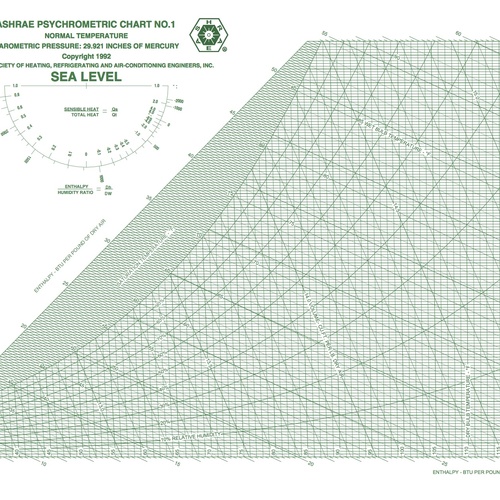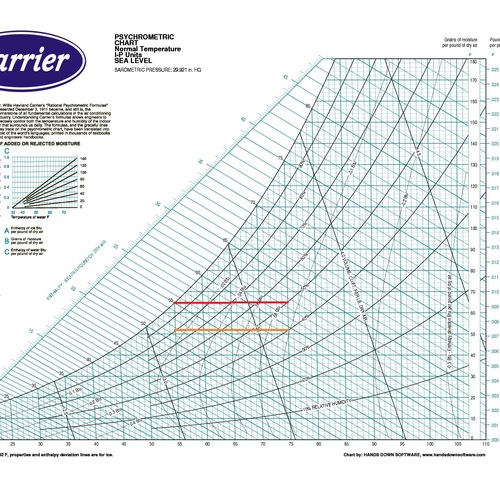
A lot of people don’t understand the best way to defog their car windshield in wet, cool weather. About 30 years ago, I was on a group trip on a hired shuttle bus. The outdoor temperature was probably in the 40s Fahrenheit and it was raining. Perfect conditions for fogging up the interior glass, right?
Unfortunately, the shuttle driver didn’t understand psychrometrics, the study of the mixture of dry air and water vapor. She chose setting for the bus’s HVAC system that not only didn’t work well, but made us all uncomfortable for the whole five-hour trip. She did have one setting right, though.
In the decades since then, I’ve figured out the optimal way to defog a car windshield on those days and I’ll share it with you here. I’ve written about all the principles behind the optimal method in this blog before so let’s put them together in a lesson on applied psychrometrics. And at the end, I’ve got a video that shows you exactly what’s going on and why the settings work.
1. Cold surfaces condense water vapor
The air in the car is fairly isolated from the outdoors. If people are inside breathing, the humidity can rise and the dew point can easily go above the temperature of the front and back windshields and the side windows, too. That’s when those glass surfaces fog up.
As you know if you’ve been reading this blog for a while, that gives you two pathways to fix the condensation problem:
- Warm up the windows.
- Reduce the humidity, and dew point, inside the car.
2. Cold air is dry air
The amount of water in the vapor phase depends on temperature and availability of water. As the temperature goes higher, more water from liquid and adsorbed phases goes into the vapor phase. Conversely, as the temperature drops, water vapor condenses out of the vapor phase and the dew point goes down.
And that’s why it’s better to talk about the actual quantity of water vapor with dew point (or humidity ratio for the psychrometric geeks out there). Cold air can have very high relative humidity. It can be 100%. But I’ve shown before that when you bring cold, 100% relative humidity air inside and warm it up, the relative humidity of that air drops tremendously. And that’s why we say cold air is dry air.
The best way to defog your car windshield
Now we know enough to choose the proper settings. Ready?
- Set the fan speed as high as it goes.
- Set the car’s HVAC system to the highest temperature setting.
- Set the air direction to blow on the windshield.
- Turn the air conditioner on. (Yes, really! Remember, you’ve got the temperature set to high.)
- Set the fresh air/recirculate option to fresh air.
- Open the windows a bit if it’s not raining or too cold.
Those settings will optimize your windshield defogging. You obviously want to move a lot of air and you want high temperature air so you can heat the windshield surface above the dew point and evaporate the condensed moisture that’s already there. These settings keep the moisture inside the car but put it back into the vapor phase instead of fogging up your windows.
The reason you want the air conditioner on is that it removes moisture from inside the car. Once you get that water into the vapor phase, the AC can condense it and remove it from the inside of the car.
You want the fresh air setting because cold air is dry air. That helps you send humid air to the outside and bring in colder air that has a lower relative humidity when you heat it up. And that’s the same reason you want to open the windows a bit if you can.
Now, here’s that excellent video I promised. It’s by a guy named Mark Rober, a mechanical engineer who worked at NASA for nine years. But he’s not your typical engineer using techno-jargon. He explains all this really well.
So there you have it. If you’ve got fogged-up windows in your car, now you know what to do…unlike my shuttle drive 30 years ago. I don’t know all the settings she used and maybe there was a lockout on one part of it, but she made us all freeze on that long drive from Tallahassee to Clearwater that chilly day. She did turn the AC on but she made the mistake of thinking that a low temperature setting would work better than a high temperature setting. She may well have used the recirculate mode, too, because I think she still had a window fogging problem most of the way back to Clearwater.
Thanks to Anthony Cox for sending me the link to the Mark Rober video.
Allison Bailes of Decatur, Georgia, is a speaker, writer, building science consultant, and the author of the Energy Vanguard Blog. You can follow him on Twitter at @EnergyVanguard.
Weekly Newsletter
Get building science and energy efficiency advice, plus special offers, in your inbox.















4 Comments
Allison,
You have accurately described the best way to remove moisture from a windshield when the water droplets are on the interior side of the glass. But in many climates, it's far more common for the water droplets or frost to be on the exterior side of the glass -- in which case the moisture content of the interior air is irrelevant, and the use of air conditioning or the tactic of opening the windows doesn't help.
If the moisture or frost is on the exterior, the only thing that helps is heat (or manual removal by scraping or wiping).
Yes, indeed that's true, Martin. This article addresses only the interior defogging of car windows, not the defrosting that's sometimes needed, so thanks for pointing that out here in the comments.
This is great advice for people driving old, or entry level cars . For everyone else, step number 4 (turn on air conditioner) is going to be a problem. Most modern cars have automatic climate control and have no method of turning on the a/c independent of the temperature setting. You can turn it off (usually called econ mode), but the only other option is auto, or just nothing (i.e. turn econ mode off). In such a car, if you turn the temperature to the highest setting, is the a/c going to be on? Probably not; only in an incredibly sophisticated system in which it's monitoring interior humidity and glass surface temperature. In those cases, the system is probably smart enough to just pick the required settings to defog the windows. I have found in most cases, simply pushing the defog option manages to get the job done. I suspect it is doing exactly what is listed here, but without any operator oversight required.
Trevor, most cars I've driven in the past twenty years automatically turn on the AC when you select the front windshield defogging mode. Whether the compressor runs or not will depend on the outdoor temperature because they're locked out below a certain temperature to prevent damage. (I don't know what that temperature is and it probably varies a bit from car to car.)
As Martin said above, though, if it's the outside of the windshield you're trying to defog or defrost, you don't need the AC and can push the AC button to turn it off.
Log in or create an account to post a comment.
Sign up Log in